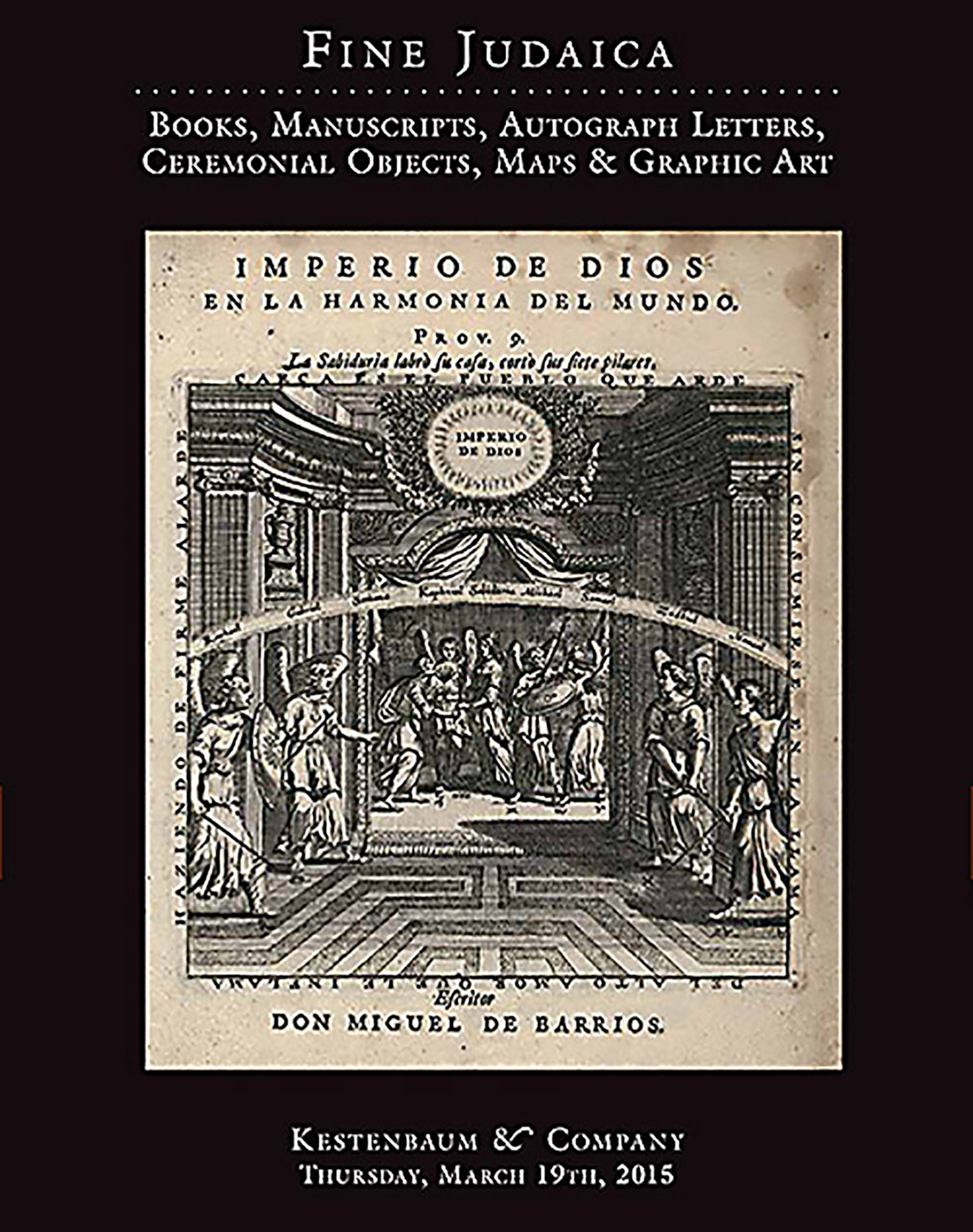Horowitz, Aaron Halevi. Avodath Halevi [Chassidic discourses on Chumash and other topics]

AUCTION 64 |
Thursday, March 19th,
2015 at 1:00
Fine Judaica: Books, Manuscripts, Autograph Letters, Ceremonial Objects, Maps and Graphic Art
Lot 83
(CHASSIDISM).
Horowitz, Aaron Halevi. Avodath Halevi [Chassidic discourses on Chumash and other topics]
Lemberg: S.L. Flecker 1861
Est: $1,000 - $1,500
PRICE REALIZED $1,500
<<Important Work of Starosselje Branch of Chabad Chassidism.>>
Rabbi Aaron Halevi Horowitz was for thirty years the preeminent disciple of R. Shneur Zalman until the latter’s death in 1812. A controversy then arose over the succession, with some Chassidim accepting the son R. Dov Baer Shneuri as their Rebbe, and others embracing R. Aaron Halevi. Ideologically, the son and the disciple differed over their approach to Avodah. R. Aaron encouraged an ecstatic type of worship, while R. Dov Baer (referred to later as the “Mitteler Rebbe”) taught that worship must be focused inward and should not display outer manifestations. To answer the challenge of the Starosselje school, R. Dov Baer penned Kuntres HaHithpa’aluth (“Tract on Ecstasy”) a remarkable analysis of different spiritual states.
In the first half of the twentieth century, R Abraham Dov Baer Hakohen Levine (known as the “Malach”) encouraged his disciples (including many former students of Yeshiva Torah Voda’ath in Brooklyn) to study the works of R. Aaron Halevi of Starosselje.
See L. Jacobs, Seeker of Unity: The Life and Works of Aaron of Starosselje (1966); R. Elior, Torath Ha’Elokuth BeDor HaSheni shel Chasiduth Chabad (1982); M. Rosman, Founder of Hasidism (1996), pp. 189-211; R. Dov Baer Shneuri, Kuntres HaHithpa’aluth, in Ma’amrei Admo”r Ha’Emtza’i (1991) pp. 37-196.
This copy has the name of the printer and date in Latin letters (see Habermann no. 190). Although Vinograd and Stefansky give the Hebrew date as 1842, Habermann correctly adds another “Kaf” from the acrostic verse, thus indicating that the secular and Hebrew dates correspond. <<This copy has 32 more leaves than as noted by Habermann and Stefansky.>>
